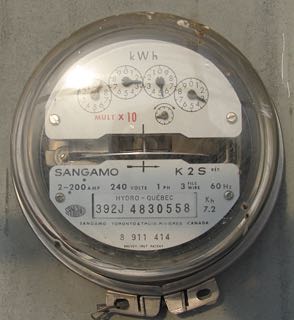Close-loop voltage control in distribution networks traditionally relied on Potential Transformers (PT) on feeders communicating with a control algorithm sending setting signals to voltage regulators and capacitor banks. More recently, Faraday devices have been used instead of PTs, being less expensive to purchase and to install.
What about smart meters with voltage measurement capability? Some smart meters measure voltage at the service point, which accounts for voltage drop in secondary feeders and transformers. There are also far more meters than PTs or Faraday sensors, providing greater coverage. But there is a problem: smart meter networks have long internal latency – it may take minutes for voltage signals to get back to a control center. This renders smart meters unusable in a traditional real-time control loop.
However, analytics could make use of delayed smart meter data, combined it with other data such as weather and historical data, to provide pseudo real-time feedback.
This could prove particularly effective with high level of Distributed Generation (DG) penetration that is affected by weather, such as solar and wind. Where a traditional voltage control system relying on real-time feedback could be overwhelmed or mislead by the variability of renewable generation, a control system relying on deep analytics of smart meter and weather data could be more effective in maintaining distribution grid stability.
